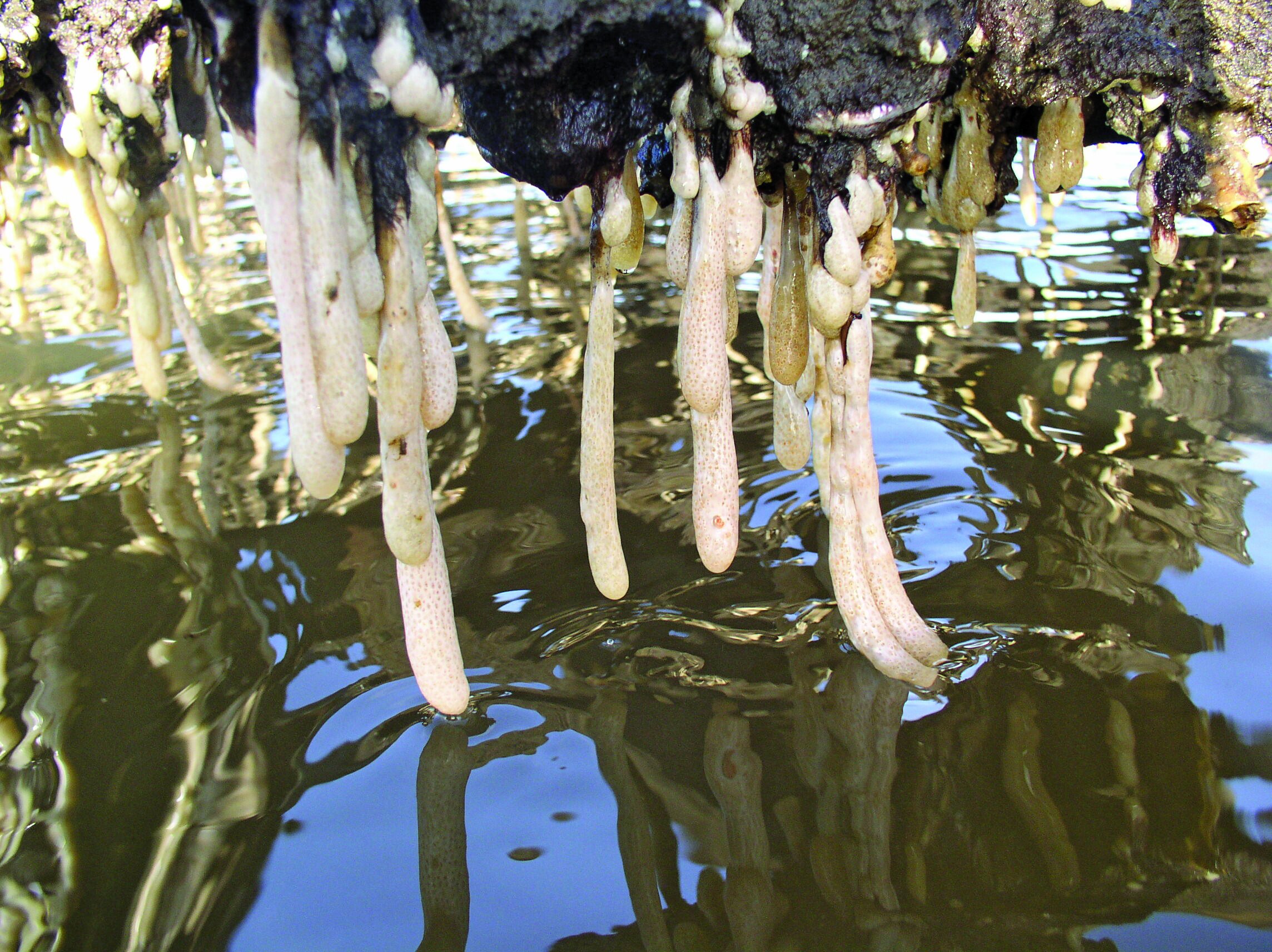
Marine pests explained
Underwater invasion
A Mediterranean fanworm growing on a scallop shell (c) Richard Hughes, Northland Regional Council
Sabella on mussel lines (c) Kathy Walls, MPI
Eudistoma growing on Sandspit Wharf (c) Samantha Happy, Auckland Council
Marine pests get established quickly, they out compete native species, and they can do serious harm. This can include:
Recreation: When marine pests reach high densities in natural ecosystems they change the look and the experience of that place.
Aquaculture: In NZ our aquaculture industry currently spends 4-10% of revenue addressing biofouling. Internationally, in places where marine pests are more serious, 25-60% of production losses are attributed to marine pests. This is hugely important for places where local economies depend on aquaculture.
Fishing (recreational and commercial): Marine pests can affect fish habitat (including nursery habitat such as in estuaries), fish stocks (e.g. disease transfer) and fishing practices (e.g. physical interference with gear, loss of bait or catch from long-lines due to predation).
Tourism: Marine pests can ruin beaches and swimming spots. So far we’ve been lucky here, but this has been seen in California and Hawaii.
Marine industries (vessels, marinas, moorings, jetties, port infrastructure): Biofouling on vessel hulls and structures adds to the cost of maintenance for owners of structures - and boats.
Indigenous cultural values: Marine pests affect the mauri (life force) of our coastlines. Negative effects, even small shifts, in the mauri of any one species or part of an ecosystem can have ramifications across the ecosystem, including for humans within it. Marine pests can impact the availability of kaimoana, and even relatively localised marine pest infestations have the potential to have significant cultural impacts, where they are intertwined with gathering of kaimoana.
Most marine pests arrive in New Zealand on vessels. But some arrive via natural means, which takes a lot longer and provides many natural barriers. This is why our marine biosecurity system focuses both on stopping them from arriving in our coastlines, and on reducing the risk of spread once they get here.


